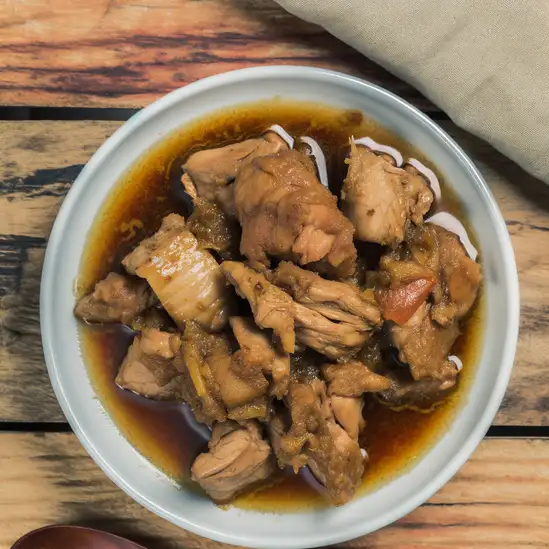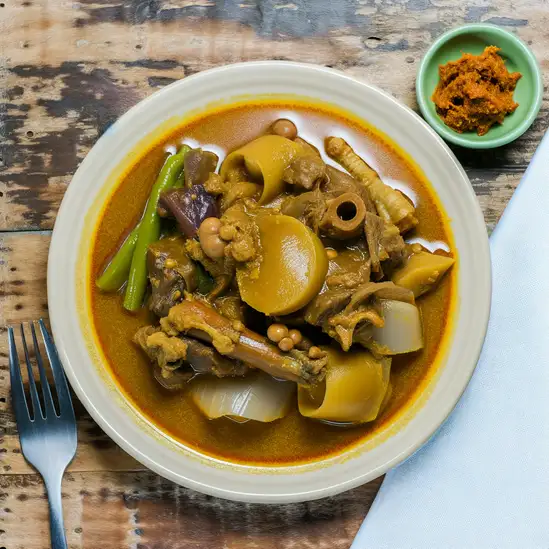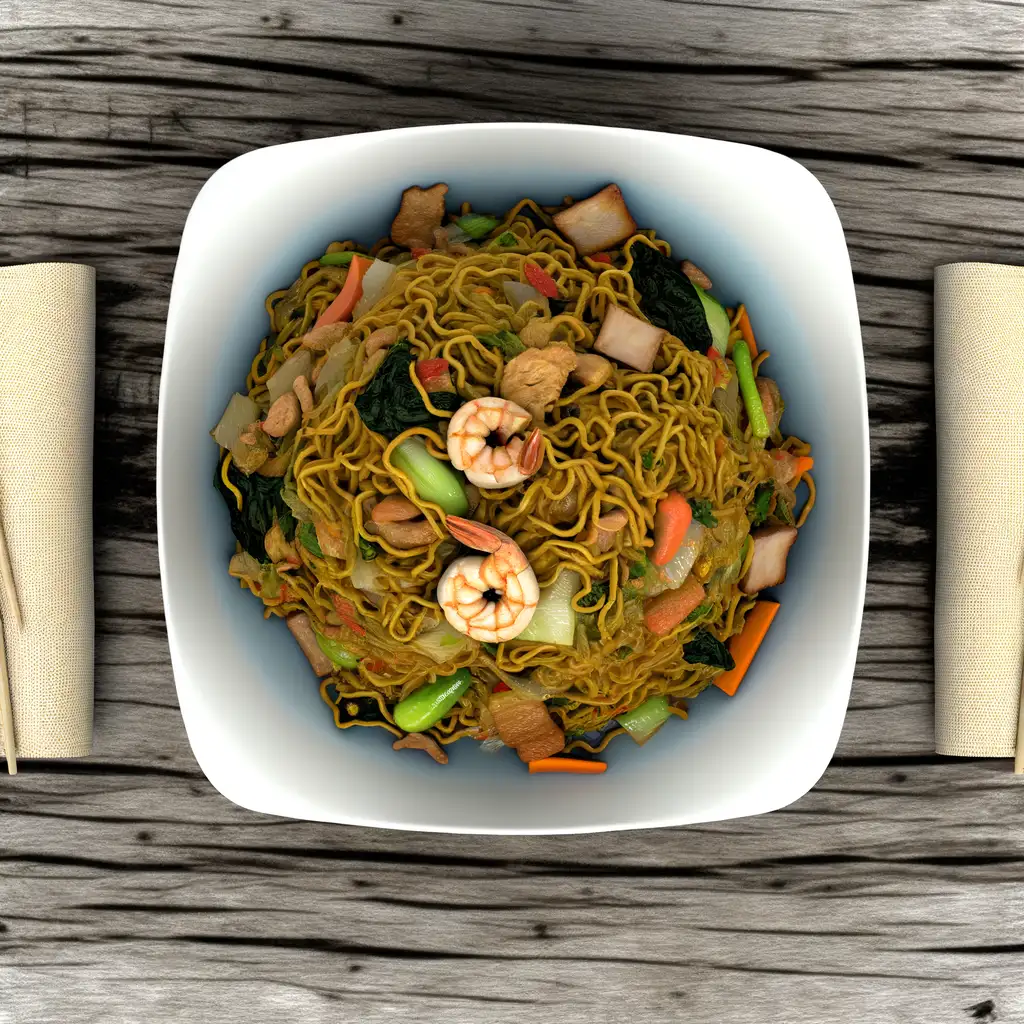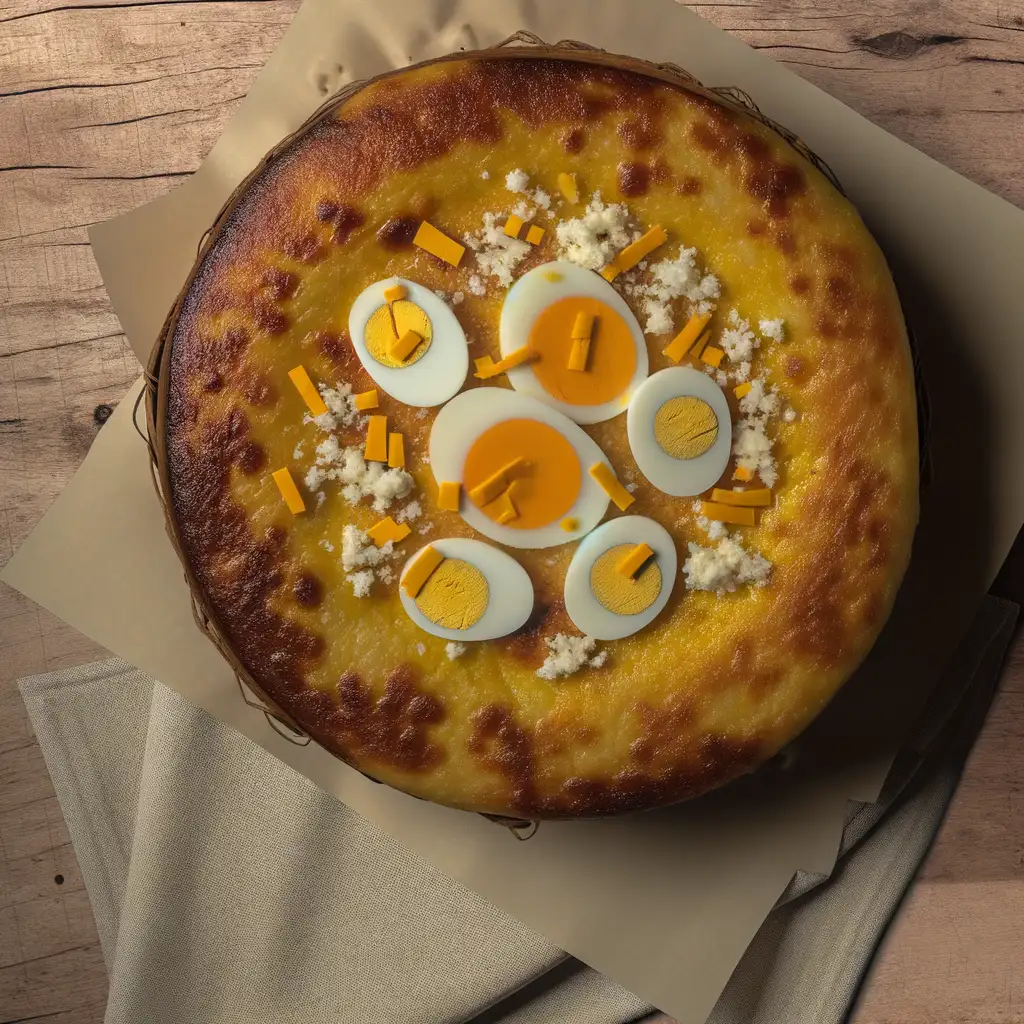



If you want to step into a living storybook,Intramuros in Manila is where you should start. The moment you walk through its massive stone gates,you’re transported back to a time when Spanish colonial charm ruled the streets. The air carries a mix of salty sea breeze and the faint scent of old wood and blooming sampaguita flowers,making every stroll feel like a gentle journey through history. Cobblestone streets wind past centuries-old churches,quaint cafes,and vibrant murals that whisper tales of resilience and culture. What’s really captivating about Intramuros is how alive it feels despite its age. You’ll hear the clip-clop of horse-drawn carriages mingling with the chatter of locals and tourists alike,while street vendors offer sweet treats like turon and warm,freshly brewed barako coffee. The sun casts golden hues on the thick walls of Fort Santiago,inviting you to pause and imagine the lives that unfolded within. It’s a place where history isn’t just in books—it’s in the laughter spilling from a nearby plaza,the rhythm of traditional Filipino music,and the aroma of adobo simmering in nearby kitchens. Intramuros isn’t just a relic; it’s a vibrant neighborhood where past and present dance together. Whether you’re exploring the grand Manila Cathedral,wandering through the lush gardens,or simply sitting on a bench watching the world go by,you’ll feel a deep connection to the heart of Filipino heritage. Trust me,this is one place that stays with you long after you leave.
The information on this page is currently being reviewed by Tripkliq and should be used as a guide only
Eng word: Hello
Eng pronunciation: Kah-moo-stah
Local language: Kamusta
Eng word: Goodbye
Eng pronunciation: Pah-ah-lahm
Local language: Paalam
Eng word: Thank you
Eng pronunciation: Sah-lah-maht
Local language: Salamat
Eng word: How much
Eng pronunciation: Mahg-kah-noh
Local language: Magkano
Eng word: Toilet
Eng pronunciation: Bahn-yoh
Local language: Banyo
Eng word: Help me
Eng pronunciation: Too-loo-gahn moh ah-koh
Local language: Tulungan mo ako
Eng word: Yes
Eng pronunciation: Oh-oh
Local language: Oo
Eng word: No
Eng pronunciation: Heen-deh
Local language: Hindi
Eng word: Excuse me
Eng pronunciation: Pah-oo-mahn-heen
Local language: Paumanhin
Intramuros, known as the 'Walled City,' was founded in 1571 by Spanish conquistador Miguel López de Legazpi. It served as the seat of government and political power during the Spanish colonial period in the Philippines.
Fort Santiago, a citadel built by Spanish navigator and governor Miguel López de Legazpi, is one of the most important historical sites in Intramuros. It served as a defense fortress and a prison for national hero Dr. José Rizal before his execution in 1896.
San Agustin Church, completed in 1607, is the oldest stone church in the Philippines. It is a UNESCO World Heritage Site and is renowned for its Baroque architecture and historical significance.
The Manila Cathedral, officially known as the Minor Basilica and Metropolitan Cathedral of the Immaculate Conception, is the premier church of the Philippines. It has been rebuilt several times due to earthquakes and wars, with the current structure completed in 1958.
Casa Manila is a museum that showcases the colonial lifestyle during the Spanish era. The building is a replica of a Spanish colonial house and offers a glimpse into the opulent lifestyle of the Filipino elite during the 19th century.
Plaza de Roma, located in front of the Manila Cathedral, was once the center of Intramuros. It was originally called Plaza Mayor and served as a public square for various social and political activities during the Spanish colonial period.
The walls of Intramuros, stretching approximately 4.5 kilometers, were built to protect the city from foreign invasions. These massive stone walls, some of which are 6 meters high and 3 meters thick, are a testament to Spanish military engineering.
Puerta de Isabel II is one of the gates of Intramuros, named after Queen Isabella II of Spain. It features a statue of the queen and serves as a historical landmark, symbolizing the Spanish influence in the Philippines.
Baluarte de San Diego is a bastion in Intramuros that dates back to the late 16th century. It was originally designed as a circular fort and has been restored to showcase its historical significance and architectural beauty.
In Intramuros, the most common Power Adaptor is Type A, Type B.



A savory dish made with meat, usually chicken or pork, marinated in vinegar, soy sauce, garlic, and spices, then slow-cooked until tender.

A sour soup typically made with tamarind, tomatoes, and various vegetables, often cooked with pork, shrimp, or fish.

A whole roasted pig, known for its crispy skin and tender meat, often served during special occasions and celebrations.

A rich and hearty stew made with oxtail, tripe, and vegetables, cooked in a peanut sauce and often served with bagoong (fermented shrimp paste).

A popular Filipino dessert made with crushed ice, sweetened fruits, jellies, and topped with leche flan and ube ice cream.

A stir-fried noodle dish that comes in various forms, often mixed with vegetables, meat, and seafood, symbolizing long life.

A traditional rice cake made with rice flour and coconut milk, often topped with salted egg and cheese, typically enjoyed during the Christmas season.
Imagine stepping into a place where history hums through the streets and the ocean breeze carries the scent of salty adventure—that’s Cebu City for you. The moment you arrive,there’s this lively energy that wraps around you,a mix of old-world charm and modern buzz. You’ll find yourself wandering through colorful markets where the chatter of vendors blends with the aroma of freshly grilled street food—think sweet,smoky lechon sizzling over coals,tempting you at every corner.
Cebu’s character is a beautiful blend of the past and present. Ancient Spanish forts and centuries-old churches stand proudly alongside sleek cafes and vibrant street art. The city pulses with warmth,not just from the tropical sun but from the people who greet you with genuine smiles and stories. At night,the streets light up with music and laughter,and you can almost taste the festive spirit in the air.
What really makes Cebu unforgettable is how it feels alive in every sense. You can hear the waves crashing nearby,see the colorful jeepneys weaving through traffic,smell the tropical fruits at the market,and feel the warmth of the sun on your skin as you explore. It’s a place where culture,history,and everyday life blend seamlessly,inviting you to dive in and experience its vibrant soul firsthand.
If you ever find yourself craving a place where nature’s calm meets a laid-back island spirit,Puerto Princesa is where you want to be. The moment you step off the plane,there’s this warm,salty breeze that wraps around you,carrying the faint scent of the sea and tropical blooms. It’s a city that doesn’t rush — people move with a gentle rhythm,and the streets hum softly with the chatter of locals and the occasional strum of a guitar from a nearby café. It feels like a breath of fresh air,both literally and figuratively.
What really makes Puerto Princesa stand out is its deep connection to nature. The famous Underground River is just the beginning — lush mangroves,crystal-clear waters,and vibrant coral reefs surround the city,inviting you to explore. You can hear the calls of exotic birds in the morning and watch fishermen bring in their catch as the sun dips low,painting the sky in shades of pink and orange. The food scene here is a delightful surprise too — fresh seafood grilled right on the beach,sweet tropical fruits bursting with flavor,and local dishes that tell stories of the sea and the land.
But beyond the sights and tastes,it’s the people who make Puerto Princesa unforgettable. Their warmth and genuine smiles make you feel like you’re not just visiting,but truly welcomed. Whether you’re wandering through the bustling market or sharing a laugh with a vendor,there’s a sense of community that lingers long after you leave. It’s a place that invites you to slow down,soak in the simple joys,and leave with a heart full of stories.
Imagine stepping onto Boracay Island and instantly feeling the gentle warmth of the sun kissing your skin,while the soft powdery white sand cushions your every step. The island hums with a laid-back energy that’s both invigorating and soothing,like a secret rhythm you can’t help but sway to. Crystal-clear turquoise waters stretch endlessly,inviting you to dive in or simply float and watch the sky melt into shades of pink and orange during sunset. The salty breeze carries the faint scent of grilled seafood mingled with tropical flowers,making every breath feel like a fresh invitation to explore.
Boracay’s charm isn’t just in its stunning beaches—it’s in the vibrant pulse of its small,welcoming community. Locals greet you with genuine smiles,and the island’s culture shines through in lively street markets,where you can sample freshly caught fish,sweet mangoes,and the unmistakable tang of calamansi. At night,the island transforms as beach bars light up with laughter,music,and the clinking of glasses,creating a festive yet intimate atmosphere that feels like a celebration of life itself.
What makes Boracay truly special is how it balances adventure and relaxation. Whether you’re kite surfing over the waves,hiking to a hidden viewpoint,or simply lounging in a hammock with a cold drink in hand,the island encourages you to slow down and savor every moment. It’s a place where time seems to stretch,and every experience—whether thrilling or tranquil—leaves you with a deep sense of joy and connection.
If you ever find yourself wandering through the heart of Bohol,Tagbilaran City greets you with a warm,unhurried rhythm that feels like a gentle hug after a long journey. The city hums with life—not the overwhelming buzz of a metropolis,but a lively,welcoming energy where jeepneys rattle by and street vendors call out their fresh fruit and local snacks. As you stroll along the waterfront,the salty breeze carries the faint scent of grilled seafood mingling with tropical flowers,inviting you to slow down and savor the moment.
Tagbilaran’s charm lies in its blend of old and new. You’ll catch glimpses of Spanish-era churches standing proudly beside colorful markets where locals barter over ripe mangoes and sticky rice treats. The city’s pulse is deeply tied to its people—friendly,easygoing,and proud of their heritage. At night,the streets light up with laughter and music spilling from small eateries where you can taste the rich flavors of Boholano cuisine,like the sweet,tender kalamay or freshly caught fish cooked with coconut milk.
What really stays with you is the city’s sense of community and its connection to the sea. Whether you’re watching fishermen haul in their catch at dawn or joining a lively fiesta,Tagbilaran feels like a place where stories are shared over steaming cups of coffee and where every corner invites you to discover a new layer of its soul. It’s not just a stopover—it’s a place that quietly pulls you in and makes you want to stay a little longer.
If you ever find yourself craving a place where vibrant city life meets the gentle embrace of nature,Davao City is where you want to be. The moment you step off the plane,there’s this warm,welcoming energy that wraps around you—like the city itself is inviting you to slow down and savor every moment. The air carries a subtle mix of tropical blooms and the faint,salty hint of the nearby sea,while the streets buzz with a friendly hum of jeepneys and chatter in a melody of languages.
Walking through Davao,you’ll notice how the city wears its culture proudly. From the colorful street markets where vendors call out their fresh fruits and local delicacies,to the intricate weaves and crafts that tell stories of indigenous tribes,there’s a deep respect for heritage here. And the food? Oh,the food! Imagine biting into a juicy durian (if you’re brave enough),or savoring grilled tuna so fresh it practically melts in your mouth,all while sipping on a sweet,refreshing calamansi juice.
What really sets Davao apart is its balance—towering mountains and lush parks sit just a short drive from bustling urban spots. You can spend your morning hiking up Mount Apo,the Philippines’ highest peak,then wind down with a stroll along the riverwalk as the sun dips low,painting the sky in shades of orange and pink. It’s a city that feels alive but never rushed,where every corner invites you to explore,taste,and connect.
If you ever find yourself craving a place where history hums softly alongside the buzz of everyday life,Iloilo City is where you want to be. The moment you step into its streets,there’s this warm,inviting energy—like the city is gently nudging you to slow down and savor its stories. You’ll notice the colonial-era buildings standing proudly beside modern cafes,their facades telling tales of centuries past. The air carries a subtle mix of salty sea breeze and the sweet aroma of freshly baked pan de sal,making every morning feel like a comforting embrace.
Walking through Iloilo,you’ll hear the lively chatter of locals,the clinking of glasses in cozy eateries,and the distant strum of guitars from street performers. The city’s character shines brightest in its festivals,especially the Dinagyang,where vibrant costumes and rhythmic drums fill the streets with infectious joy. But even on quieter days,the genuine smiles of Ilonggos and their easygoing hospitality make you feel like you’ve found a second home.
And then there’s the food—oh,the food! From the rich,savory batchoy served steaming hot in humble noodle shops to the sweet,creamy taste of fresh mangoes,every bite is a celebration of local flavors. Iloilo isn’t just a place to visit; it’s a place to experience,where every corner invites you to pause,breathe,and fall a little in love with its soul.
Unlicensed money changers offer attractive exchange rates but shortchange tourists or use sleight-of-hand tricks.
Scammers approach tourists claiming to collect donations for a local charity, school, or church, but the money is pocketed instead.
Vendors sell counterfeit or low-quality souvenirs, claiming they are authentic or handmade by local artisans.
Scammers pose as official tour guides and offer overpriced or subpar tours, often providing incorrect historical information.
Horse-drawn carriage drivers may overcharge tourists by not disclosing the full price upfront or adding hidden fees after the ride.
Some restaurants or street vendors may charge tourists significantly higher prices than locals for the same items.
Thieves target distracted tourists in crowded areas, stealing wallets, phones, or other valuables.
The Philippines has very strict laws regarding the possession, use, and trafficking of illegal drugs. The Comprehensive Dangerous Drugs Act of 2002 (Republic Act No. 9165) imposes severe penalties, including long prison sentences and even the death penalty for certain offenses. Tourists should be aware that the possession of even small amounts of illegal drugs can lead to severe consequences. It is highly advisable to avoid any involvement with illegal drugs while in Intramuros or anywhere else in the Philippines.
In Intramuros, as in the rest of the Philippines, smoking is regulated under the Tobacco Regulation Act of 2003 (Republic Act No. 9211) and Executive Order No. 26, which provides for the establishment of smoke-free environments in public and enclosed places. Smoking is prohibited in public places such as schools, hospitals, public transportation terminals, and government offices. Designated smoking areas are allowed but must comply with specific requirements. Tourists should look for designated smoking areas and avoid smoking in prohibited zones to avoid fines and penalties.
Vaping in Intramuros is subject to similar regulations as smoking. The use of electronic cigarettes and other vaping devices is restricted in public places, and designated vaping areas should be used. The same Executive Order No. 26 applies, which means vaping is not allowed in schools, hospitals, public transportation terminals, and other enclosed public spaces. Tourists should be cautious and look for signs indicating whether vaping is permitted.
What are other people saying about Intramuros?
Recent Social posts about Intramuros
There is nothing to show you for now.